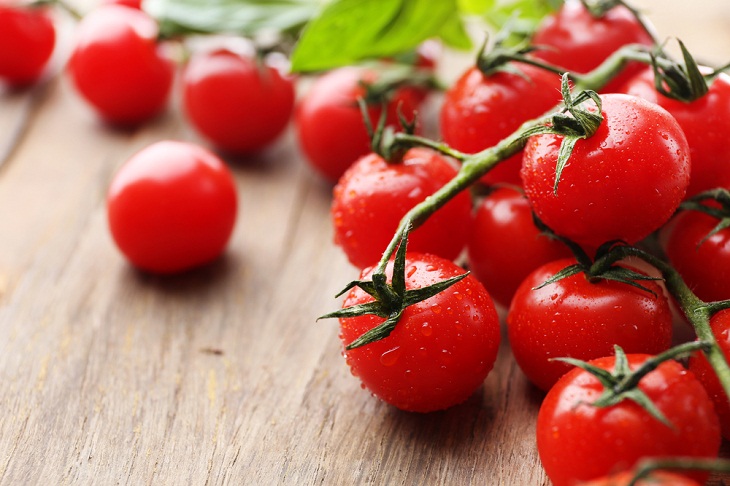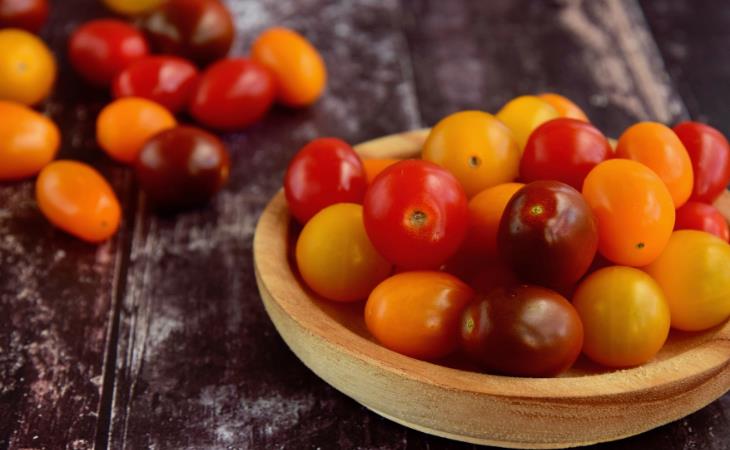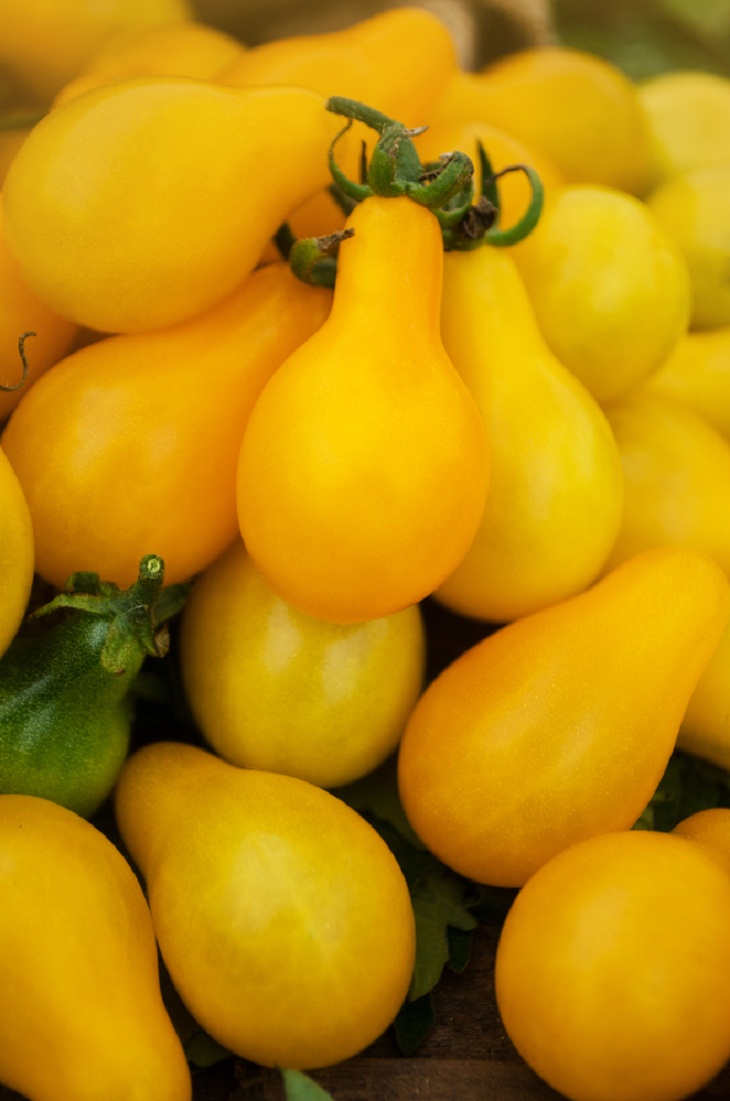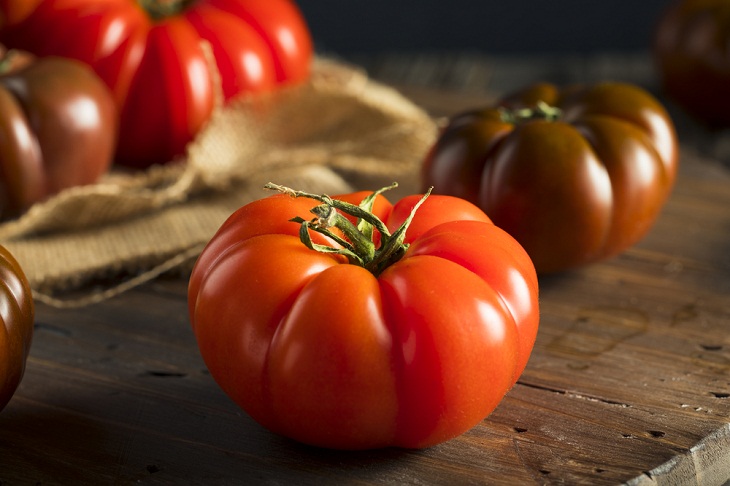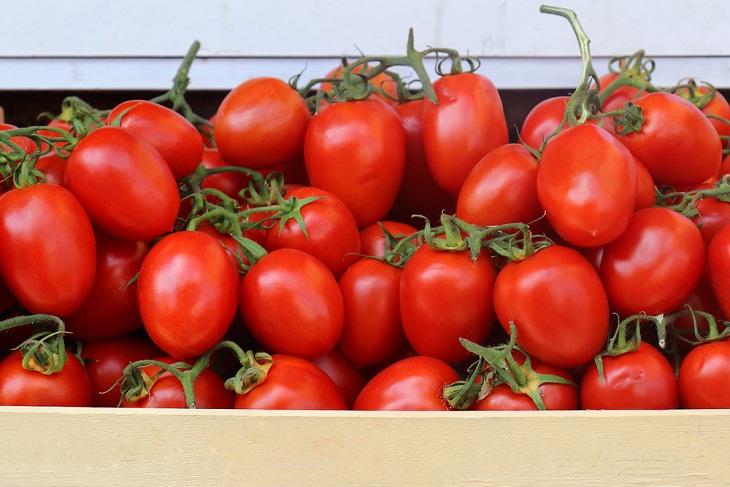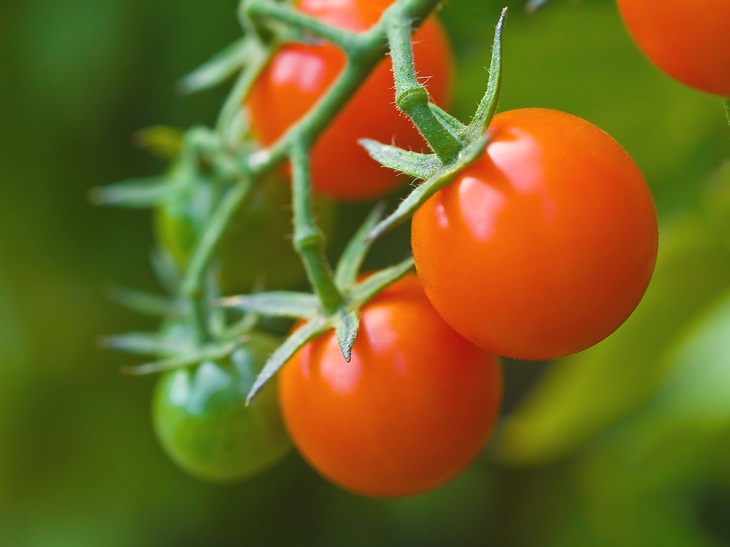Cherry tomatoes taste vibrant and sweet, possibly due to their small size, which intensifies the flavor. These tomatoes have high water content and burst with juice when bitten into. They vary in size, ranging from the tip of a thumb to a golf ball. While red is the most common color, cherry tomatoes can also be found in shades of green, purple, yellow, and even nearly black.
Cherry tomatoes are usually consumed raw to fully experience their delightful texture and juicy sweetness. They can be added to salads, salsas, or vegetable platters. When cooked, such as through roasting or sautéing, cherry tomatoes develop a more robust and profound flavor. However, they are not considered the ideal choice for making tomato sauces.
2. Grape tomatoes
As the name suggests, grape tomatoes are similar in appearance and size to grapes. Grape tomatoes have a denser, chewier, and more substantial texture compared to cherry tomatoes. They offer a delightful blend of sweetness and tanginess, and their long shelf life surpasses that of cherry tomatoes. Additionally, their tougher and thicker skin makes them less delicate and more convenient for transportation.
Given their meaty texture, grape tomatoes are an excellent addition to pasta, salads, and vibrant side dishes. They can be enjoyed raw as a snack or cooked through methods such as roasting or sautéing.
3. Pear tomatoes
Pear tomatoes, also called teardrop tomatoes, are heirloom tomatoes (open-pollinated varieties that have been passed down through several generations of family). These little delights, known for their oblong shape, have a gentle and predominantly sweet taste. The yellow varieties are the most common, but there are also red and orange ones. Toss them into salads or savor their freshness straight from the vine.
They are particularly appealing to home farmers due to their high yield. Once these tomatoes yield fruit, you can expect a consistent and plentiful crop of pear-shaped tomatoes throughout the season.
4. Beefsteak tomatoes
Beefsteak tomatoes, sometimes known as beef tomatoes, are a huge variety of grown tomatoes that can grow to be around 4-6 inches across and weigh up to 1 pound (453.5 g) or more. They have prominent ribs and contain multiple small seed compartments. These tomatoes have a firm, juicy, and meaty flesh that maintains its shape even when thinly sliced.
These round and succulent tomatoes are particularly well-suited for use as toppings on burgers and sandwiches. To truly appreciate the unmatched taste of beefsteak tomatoes, it is highly recommended to indulge in them during the summer when they reach their pinnacle of flavor.
5. Plum tomatoes
Plum tomatoes, also known as Roma or paste tomatoes, are distinguished by their odd oval shape that resembles a kiwi. Because of their meatier texture, fewer seeds, and lower water content as compared to other tomato types, they are often used for canning and are highly recommended for sauce-making.
In addition to their prevalent use in sauces, plum tomatoes can also be employed in recipes that require a tomato's textural qualities without overwhelming the dish with its flavor.
6. Green tomatoes
According to Farm Flavor, there are two types of green tomatoes: ones that are unripe red tomatoes and ones that will stay green throughout their entire fruiting cycle (which are typically heirloom varieties). The green tomatoes you find on restaurant menus are generally the former.
Green tomatoes are harvested intentionally before ripening or are fruits that did not end up ripening by the end of the growing season.
Unripe green tomatoes are used in various dishes. Fried green tomatoes, for example, are popular in the southeastern United States. They are sliced, breaded with cornmeal, then fried. They’re also excellent for canning and preparing sauces. These tomatoes are tangy and slightly sour, so they impart a unique flavor and color to dishes. One common use of green tomatoes is to make relish, a condiment for sandwiches and meats. When cooked, green tomatoes retain their shape, making them excellent for pickling.
Keep in mind that green tomatoes that are not yet fully ripe have higher alkaloid levels than ripe ones, making them harder to digest. Consuming unripe tomatoes raw can potentially lead to gastrointestinal problems, so it is advisable to avoid eating them in their unripe state.
7. Vine-ripened tomatoes
Vine-ripened tomatoes are sold while still attached to the vine they grew on, which helps extend their shelf life. Tomatoes that are allowed to fully ripen on the vine offer a more robust aroma and higher levels of antioxidants than those ripened off the vine. These tomatoes have a delightful flavor profile characterized by sweetness, juiciness, and a fresh taste. It is recommended to keep the stems intact on on-the-vine tomatoes until they are ready to be used in the kitchen.
While you can gently detach the tomatoes from the stem and slice them for various culinary uses such as sauces, salads, sandwiches, burgers, and canning, you also have the option to leave the tomatoes on the vine for roasting.

